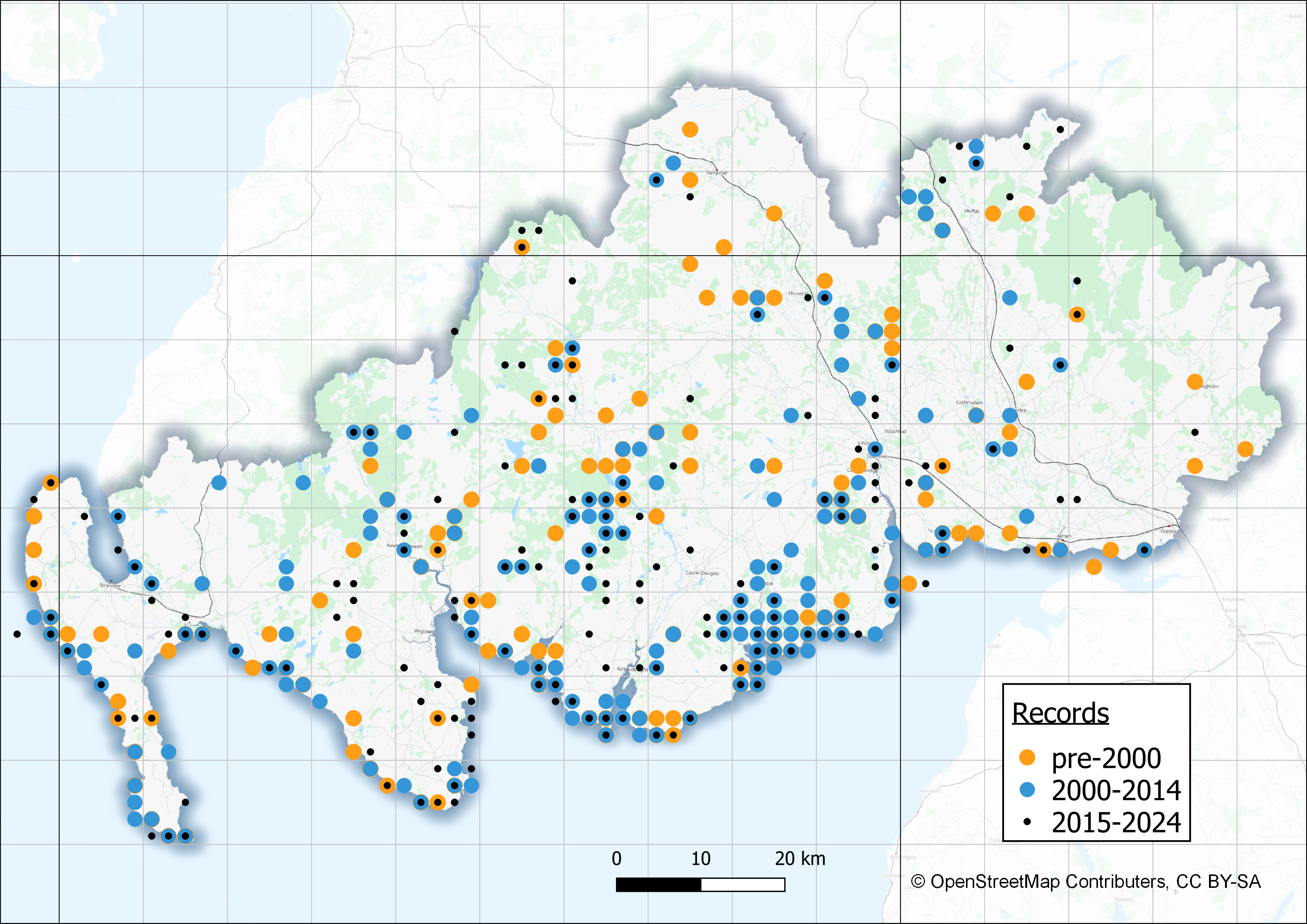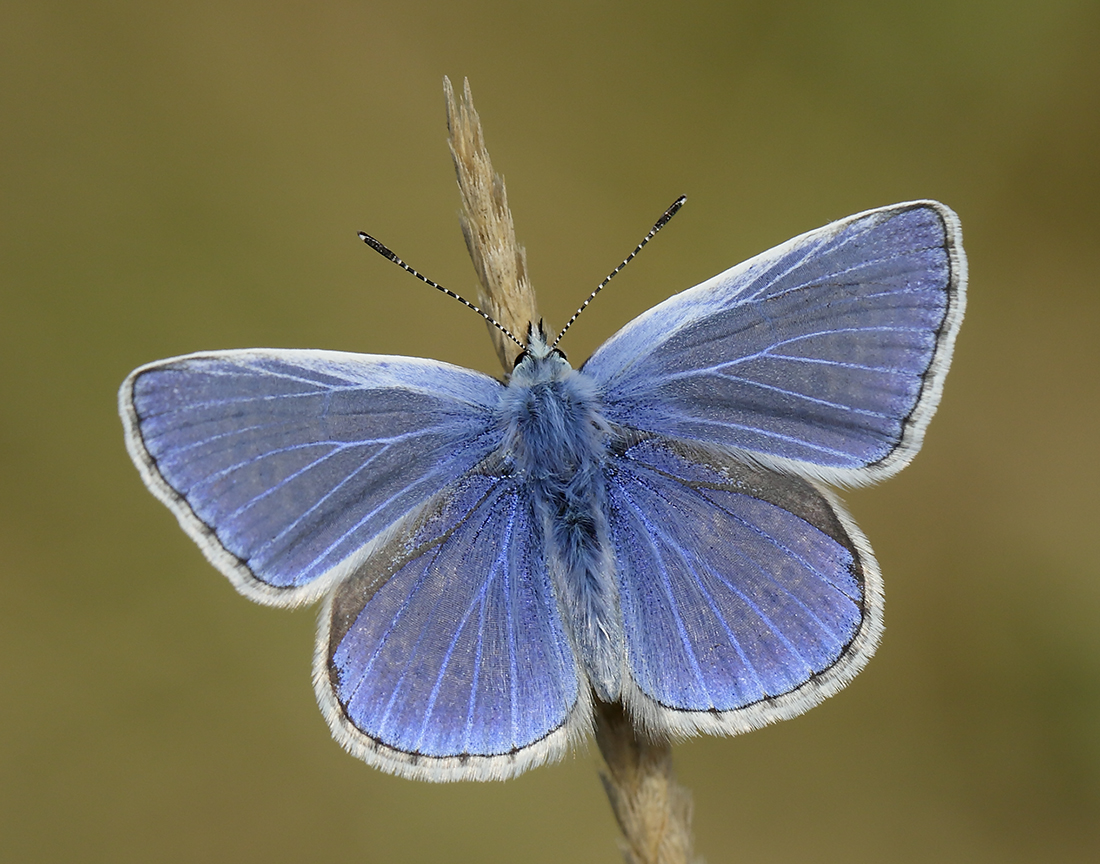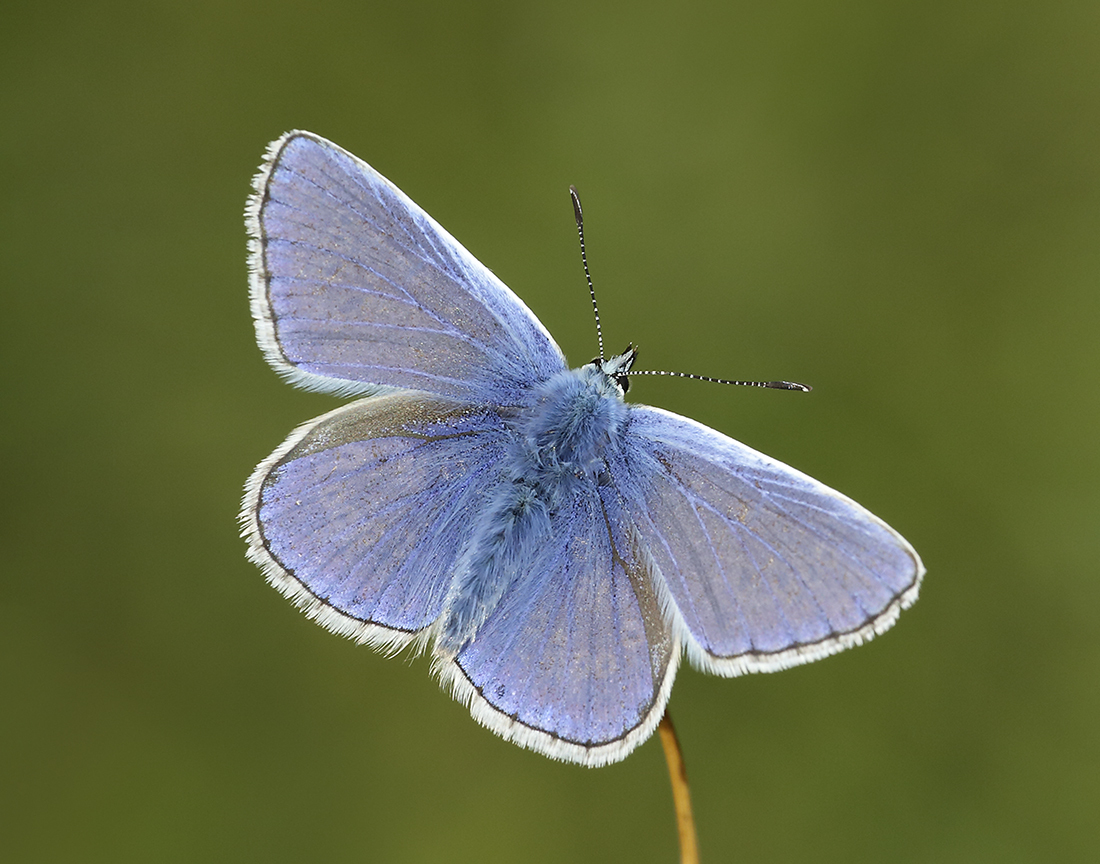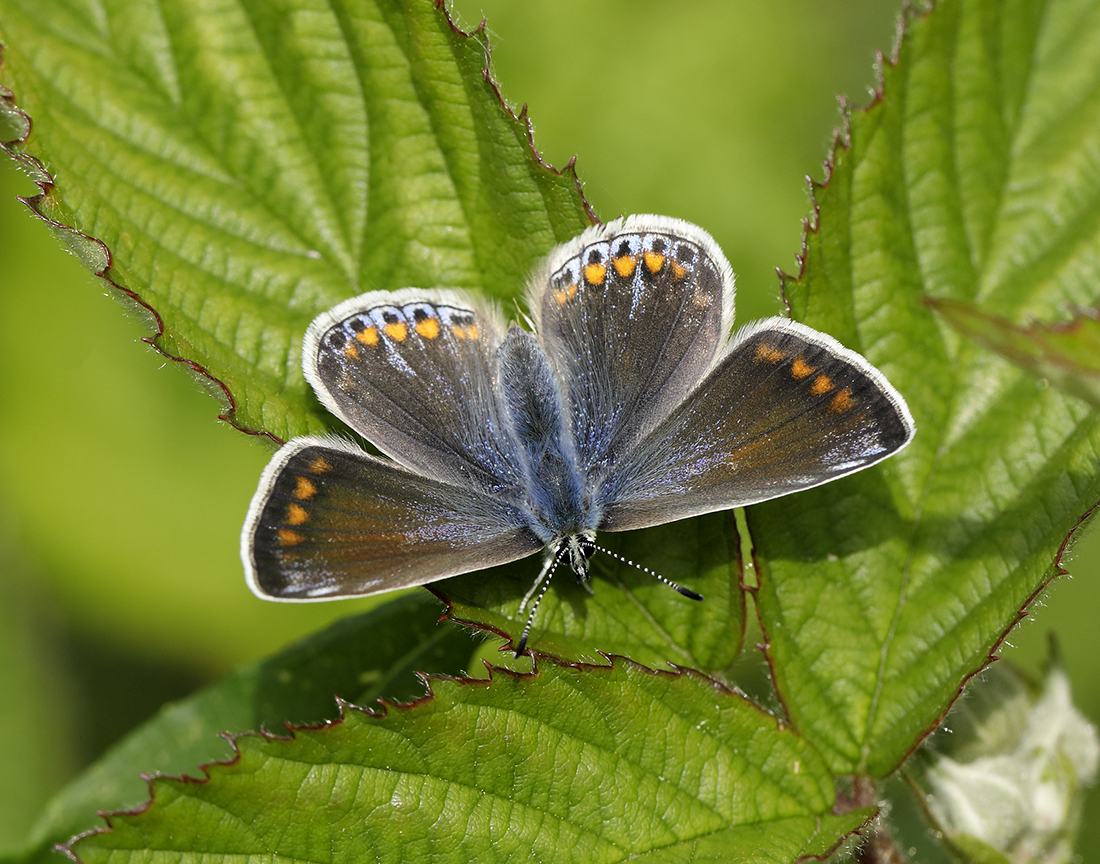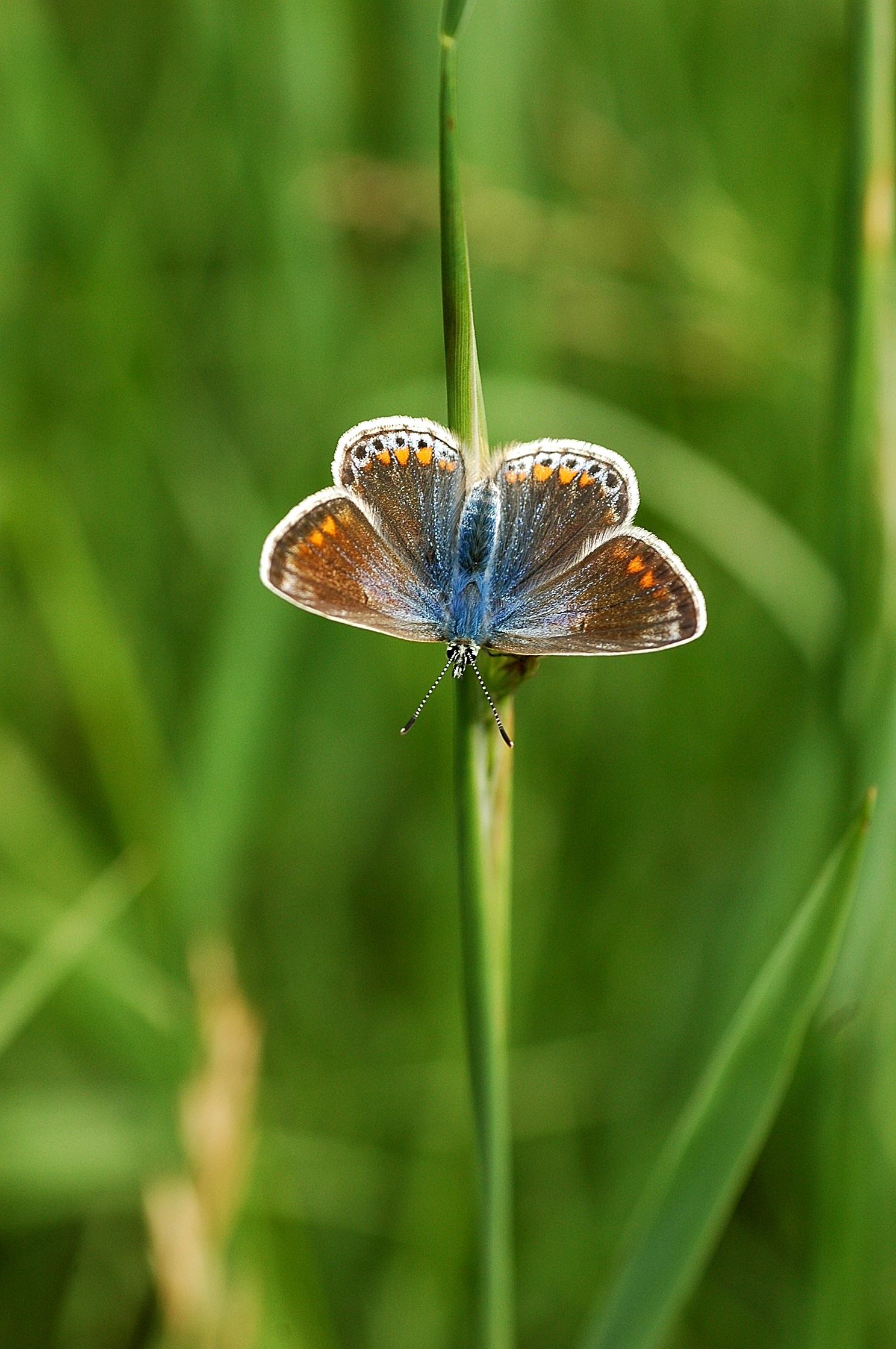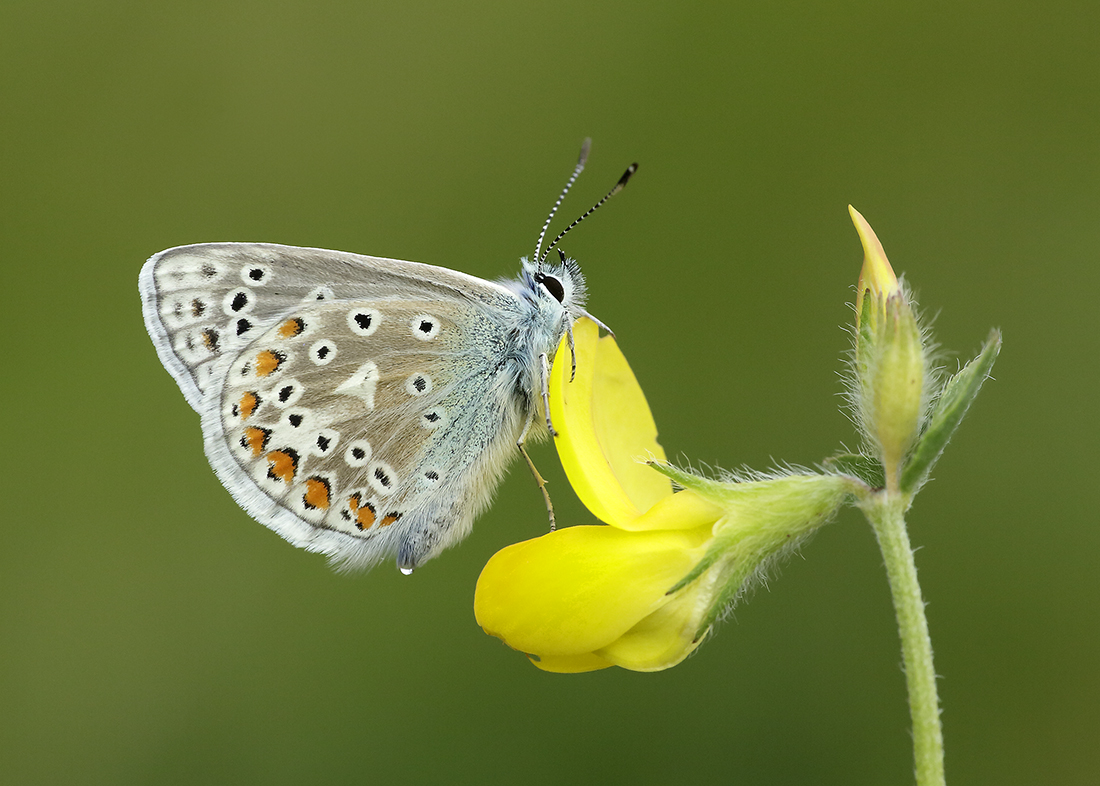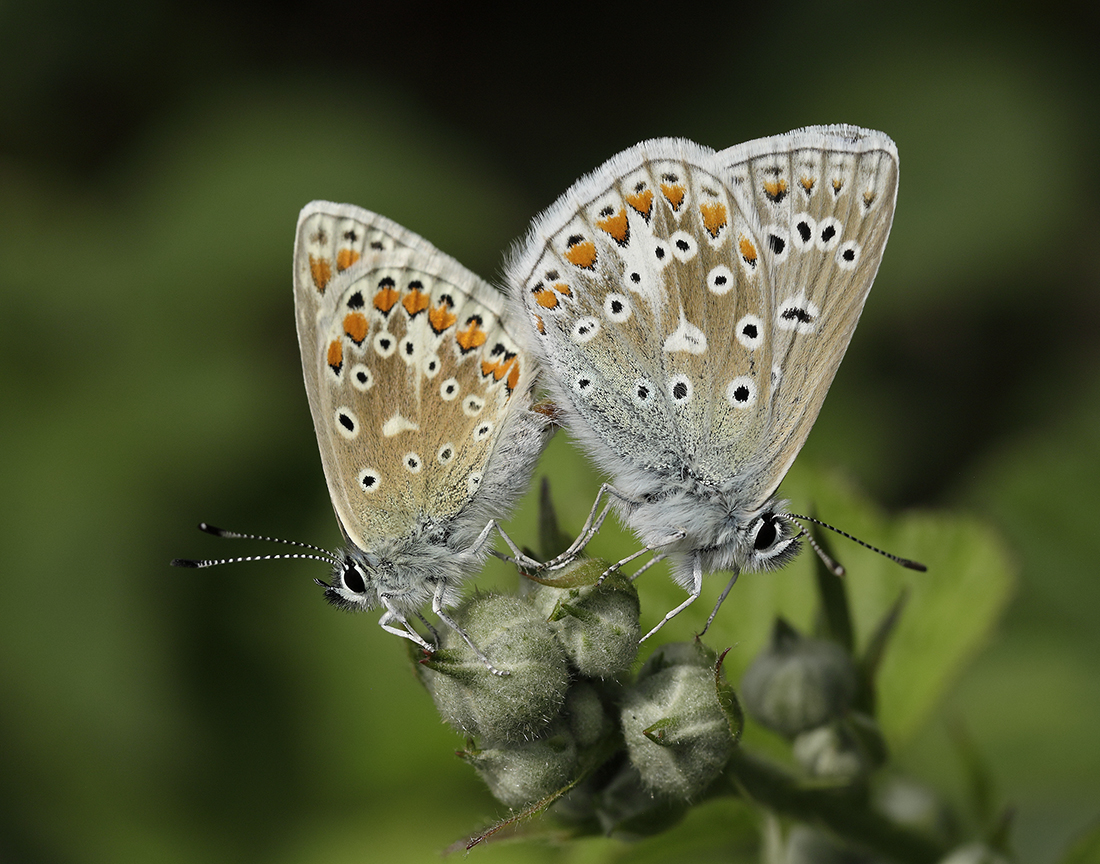The Common Blue is found throughout the region, nevertheless, despite its name, the Common Blue is rarely abundant, and on farmland or moorland it is normal to find only small colonies.
Identification
When fresh the upper wings of the male are a pure delicate blue usually with a tinge of pale violet. In comparison the amount of blue on female wings varies a great deal, from those that have just a light dusting of blue scales near the body thus looking quite brown, to those with many blue scales, the latter being particularly beautiful.
The male Common Blue could be confused with the Holly Blue if only the upper wings are seen, but they usually fly in different habitats and at different times. Brown forms of the female look similar to the Northern Brown Argus but lack the latter’s white-spotted upper wings.
Life cycle & flight period
In most years the Common Blue has one generation a year, the first adults emerging in late May or early June, peaking between early June and early July. But, increasingly in the region, there is a second generation, and low numbers may be seen flying again in late August and even into early September. South of the border the Common Blue has two generations each year. The zone where two generations occur regularly is currently in Cumbria and Yorkshire but is moving northwards as the climate continues to warm. Overwinters as a caterpillar.
Larval foodplant
The predominant caterpillar foodplant is Common Bird’s-foot-trefoil, a plant of short, dry grassland, but females can also lay their eggs on Kidney Vetch and Lesser Trefoil. In damper, tall grassland habitats, the Common Blue can use Greater Bird’s-foot-trefoil.
Habitats
Bird’s-foot-trefoils are very common plants occurring in a wide variety of situations, from the coast to the uplands, in woodland and on urban ‘waste’ ground. However, the highest numbers of Common Blues tend to be seen in areas with poor, infertile soils that support abundant Common Bird’s-foot-trefoil, such as dune grassland, forestry tracks or post-industrial ‘brownfield’ sites.

